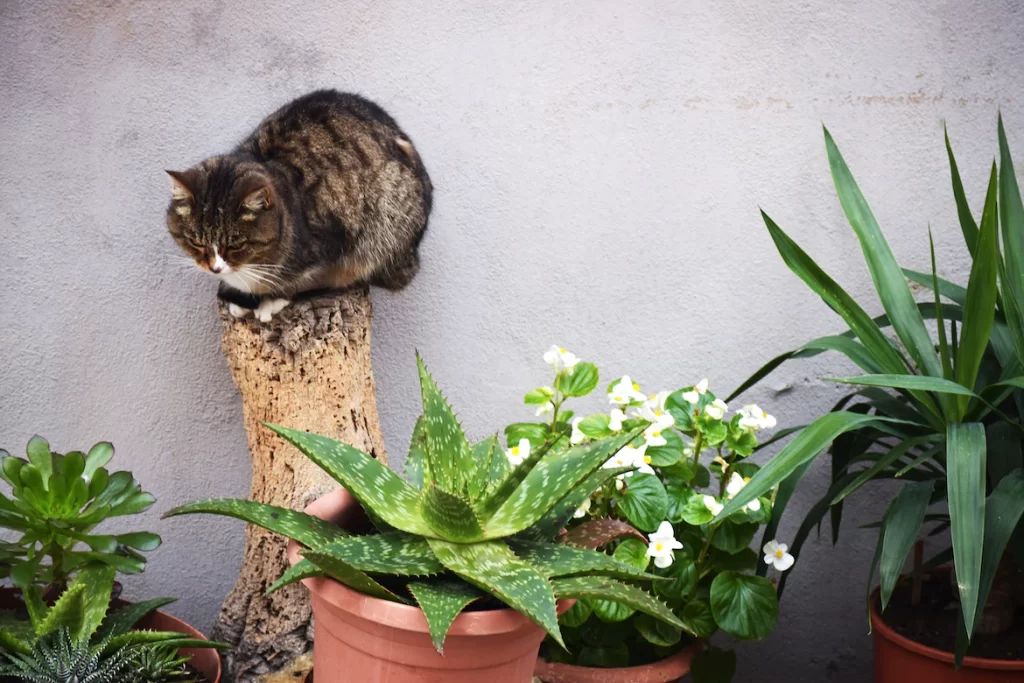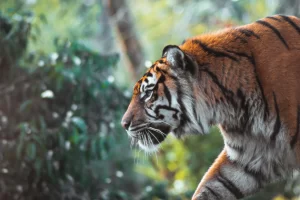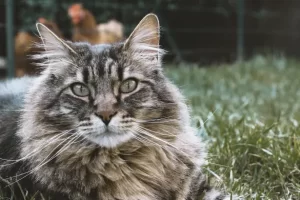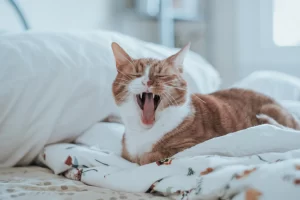Last updated on February 5th, 2023 at 06:27 pm

As a cat owner, you should know the plants that are dangerous to cats. The plants may be in your yard, inside the house, or in the kitchen farm. You should be aware of the plants that you should avoid keeping and those that are safe for your cat. A cat is good at climbing. Thus, the toxic plants should be placed in an area the cat cannot access at any given tie. The most dangerous plant to a cat is a lily. Lilies have a potential health risk to your cat. Consuming lilies may cause kidney failure, which could result in death. If you doubt a certain plant’s safety, you should seek advice from your vet.
Why cats eat plants
Seeing your cat feeding on plants might seem abnormal since we all know cats are carnivores. Cats are curious animals and will do any mischievous activities to find out something. However, it is not very normal when you see your cat feeding on plants frequently. They might feed but in small bits. Here are some of the reasons why your cat is feeding on plants.
Your cat needs deworming
Plants contain a chemical that helps to deworm, especially dogs and cats. When you find your cat feeding on plants regularly, you must seek medication. Before giving any medication to the cat, ensure that you visit a vet who will provide you with a way forward. It would be best if you also learned how frequently your cat needs deworming to prevent them from feeding on plants. A cat may vomit due to overfeeding on plants.
Your cat is lacking some nutrients
Just like humans, a cat needs a balanced diet. When a cat lacks some enrichments in the body, they seek them. A cat needs calories, proteins, fats, and carbs to grow healthily. The nutrients should be balanced. For instance, you should not feed your cat too many carbohydrates, as they require more proteins. When your cat feeds on plants, they are most likely lacking folic or iron in their body.
The plants make your cat feel good
Some plants like catnip have a sensation that your cat is most likely to enjoy. In some cat toys, some balls contain catnip for the cat to lick as they play. Cat nip has some nutritional benefits for the cat. Other plants include cat grass, which is good and healthy for the cat.
Soothing sore throat
Your cat might go through a hard time with sore throat issues. It is normal to seek ways of soothing it since, as an owner, you might not notice what is wrong with your cat.
Your cat has constipation issues
When your cat overfeeds, vomiting is the only way to reduce the discomfort. Feeding on a plant may force the cat to vomit. This happens when they feed on too many plants. Other instances when your cat may eat plants are due to constipation.
10 Plants that are dangerous to cats
Feeding on plants is a normal thing for your cat. However, some plants may cause harm to your cat after feeding on them. Let’s look at the plants that are dangerous to cats:
1. Autumn Crocus
The plant is commonly known as meadow saffron or naked lady. The plant blossoms best during winter, which is considered a flowering plant. According to ASPCA, the plant is dangerous to your cat, dog, and horse. All the parts of the plant are toxic; therefore, be careful with it. Autumn Crocus is more harmful to your cat since it contains alkaloid colchicine, a very toxic element.
When your cat feeds on the plant, they experience gastrointestinal symptoms such as drooling, vomiting, and diarrhea. They may also experience difficulties breathing and seizures, which may cause death. The symptoms may show after the cat feeds on the plants or several days later.
2. Azaleas and Rhododendrons
The plants are classified among the flowering shrubs and trees that have toxic elements when your cat feeds on them. The plants have over 1,000 species where the degree of toxins changes from different species. The plant’s toxic element is known as grayanotoxins. If your cat feeds on any part of the plant, it may experience ingestion. This occurs by even providing a tiny amount of the plants.
After feeding on the plant, the symptoms include bloody diarrhea, drooling, vomiting, lack of appetite, coma, death, and weakness. You must watch out for the plant and prevent any plant clippings in your house.
3. Cyclamen
The plant is commonly known as Persian violet. It has more than 20 species globally. The plant is classified as a perennial flowering plant. The plant is mostly used as an indoor plant by most homeowners. The plant is not all toxic, and only some parts are contaminated. The most poisonous part of the plant is the tuber and the root. However, the other parts of the plant have Saponins with some toxic elements.
According to Pet Poison Helpline, your cat will experience vomiting, diarrhea, and drooling upon feeding on the plant in small portions. When your cat provides on bigger parts, they may experience an increased heart rate, seizures, or death when symptoms persist.
4. Daffodils/Narcissus
The plant species is a flowering spring perennial. Most of the plants that are found in this species contain toxins. The whole plant parts are toxic as they have lycorine, a poisonous agent. However, Pet Poison Helpline states that the most toxic part of the plant is the bulb.
The poisonous agent causes vomiting, drooling, and abdominal pains when your cat consumes the daffodils plant. If taken in large amounts, your cat will experience cardiac arrhythmias and very low blood pressure, which can lead to the cat’s death. Any plant in this family should be kept away from cats.
5. Dieffenbachia
Dieffenbachia is also known as charming dieffenbachia, giant dumb cane, tropic snow, and exotica perfection. The plant is mostly used as an indoor plant by most people. Nevertheless, it contains calcium oxalate crystals that are not soluble. Once taken, your cat will experience oral irritation, a burning effect in the mouth, vomiting, and drooling.
You might observe your cat experiencing difficulties when swallowing their food. The plant is not considered deadly, but the cat will have a painful period and extreme discomfort when feeding on the plant.
6. Kalanchoe
Kalanchoe is a beautiful flowering houseplant mostly for your living room area. It is also known as the mother-in-law plant, mother-of-millions, and devil’s backbone. It contains bufadienolide toxins that may cause gastrointestinal issues such as drooling, vomiting, and diarrhea in your cat.
When your cat feeds on larger amounts of the plant, it may experience heart arrhythmias and seizures, and the cat may even collapse. The plant may also cause ingestion and stomach discomfort to your cat.
7. Lilies
As stated earlier, lilies are among the most dangerous plants when you own a cat. Many plants have lilies at the end of their name. The plants include Japanese show lilies: Asiatic lilies, red lilies, wood lilies, Easter lilies, and daylilies. Among them, Easter lilies are the most dangerous of the lily species for your cat.
When your cat feeds on little amounts of lilies, they face ingestion and may also lead to death due to the fatal toxins found in lilies. Licking the pollen or feeding on one petal is enough to cause complications for your cat. If you realize your cat has made contact with a lily plant, consult the vet as soon as possible to prevent the toxins from killing your cat.
8. Oleander
Oleander plant, also known as Rosebay and Nerium oleander, is commonly used as an outdoor plant. It grows well in warm climates. The plant has toxins called cardiac glycoside that high affect the heart muscle. Once your cat feeds on oleander, they experience vomiting, drooling tremors, seizures, and heart failure.
According to Pet Poison Hotline, all parts of the flower are toxic. This includes the water found in the vase where you planted your oleander. You should not bring the flowers from the oleander plant anywhere close to your cat.
9. Sago Palm
Sago palm/ zamias/ cardboard palm is an outdoor plant that blossoms best in tropical and subtropical areas. Research shows that all parts of this plant are toxic, but the seeds are the deadliest. The toxic compound in the plant is called cycasin which causes serious liver damage to your cat. It is among plants that are dangerous for your cat.
Your cat will experience vomiting, diarrhea, and black-looking stool. Further, the condition may worsen when your cat may experience liver failure, thirst, bruising, and death. Studies show that cat survival is less likely when they feed on the plant, even after quick treatment.
10. Tulip and Hyacinth
Tulips are among the most common plants in providing bouquets and garden plants. The plants are members of the Liliaceae family, which is among plants that are not safe for cats. Tulip has tulipalin A and tulipalin B, deadly plant toxins. Hyacinth contains narcissus-like alkaloids.
The dangerous compounds in these plants are mostly found in the bulbs where your cat may experience depression, tremors, vomiting, and diarrhea. There are many more plants that are dangerous to cats. Here is a list of those plants:
- Adam and Eve
- Aloe Vera
- American Holly
- American Yew
- American Mandrake
- Alocasia
- African Wonder Tree
- Apple
- Arum
- Arum lily
- Barbados Pride
- Bay Laurel
- Begonia
- Birds of Paradise
- Bitter Root
- Black Cherry
- Black Nightshade
- Bobbins
- Borage
- Buckeye
- Buckwheat
- Buttercup
- Caladium
- Cherry
- Daisy
- Dock
- Dog Daisy
- Fig
- Fern Palm
The list of plants that are dangerous for your cat might not end. It is up to you to check out the type of plant you are planning on keeping if you are a cat parent. Other plants are not deadly but may lead to stomach discomfort when your cat consumes them. It might be hard to keep your cat away from plants since cats can access any location they want.
What to do when your cat feeds on dangerous plants
There are many ways to notice when your cat has fed on dangerous plants. The most common signs are vomiting, drooling, and diarrhea. Other symptoms may include thirst, difficulties when breathing, poor appetite due to stomach discomfort, skin irritation, and incoordination. You need to take these steps when you observe the symptoms above:
- Ensure that your cat does not feed on more plants. Take the plant to a place that your cat cannot access. If the cat feeds on the plant again, it may worsen the conditions and lead to death. Your cat may not know the dangers of some plants as they may love the texture of the plant or the taste. You must keep the plants away.
- Note the time the cat fed on the dangerous plants. This will show you how much damage may have been caused already and how much time you have to seek medical care without fail.
- Contact your vet as soon as possible since most of these dangerous plants contain toxins that can lead to death within a few hours of consumption. A vet will know the best way to cure the cat.
- Take the advice given by your vet. Any medications and diet plan should be followed to ensure total recovery for your cat and be in a position to stay healthy even after the given medication.
Conclusion
You need to be watchful about the type of plant you keep in the house or yard when owning a cat. You can place the plants in large vases where the cat cannot access or keep less deadly plants. Your cat may feed on plants for various reasons, such as dietary needs or illnesses. You need to watch and observe how many plants your cat can feed. It will help you determine and solve the problem before it gets serious. Hopefully, this post on plants that are dangerous to cats should help you remain informed on the cat’s likes and dislikes.
Additional Resources:
My Cat Vomits After Eating! What To Do?


